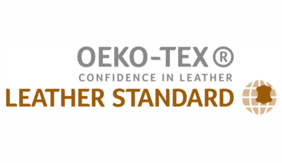In November of this year PFI joined the international OEKO-TEX® Association and starting in January 2017 will be officially testing leather and leather goods according to the LEATHER STANDARD by OEKO-TEX®. The set goal is to enhance the quality and safety of materials and products.
The international association for research and testing in the area of textile ecology (OEKO-TEX®) is an association of independent textile research and testing institutes in Europe and Japan with offices throughout the world. OEKO-TEX® has the goal of establishing uniform testing standards and globally binding criteria for objective assessment of environmentally compatible and socially responsible production conditions in companies involved in the textile processing chain. The newly issued LEATHER STANDARD by OEKO-TEX® is a worldwide consistent and independent
testing and certification system for leather and leather products at all processing levels, and now closes the gap in OEKOTEX® certification of leather clothing.
Not only finished articles made of leather ‒ such as clothing, shoes, handbags, gloves, accessories, or covers ‒ but also semi-finished products (wet-blue, wet-white, crust, etc.), finished leather, and leather fibre materials can all be certified according to LEATHER STANDARD by OEKO-TEX®. The testing and certification system is of relevance for tanneries, leather goods manufacturers and traders, and sourcing offices.
The LEATHER STANDARD by OEKO-TEX® certificate is awarded only if all components of a product fulfil the specified criteria. All non-leather components and accessories such as buttons, zip fasteners, and rivets, as well as textile materials present in a product are tested and have to satisfy the valid demands of the established STANDARD 100 by OEKO-TEX®. This should enhance the safety of the product for the consumer and facilitate more efficient checking.
What Does LEATHER STANDARD by OEKO-TEX® Take into Consideration?
- European and international legislation concerning, for example, prohibited azo dyes, chromium(VI), formaldehyde, pentachlorophenol, cadmium, nickel liberation, perfluorooctanesulphonic acid (PFOS)
- Numerous hazardous chemicals, even if they are not yet subject to statutory regulations
- Requirements of Annexes XIV and XVII of the European chemicals regulation REACh and the ECHA SVHC candidate list, in so far as they are of relevance for leather and leather goods
- Requirements of the US Consumer Product Safety Improvement Act (CPSIA) relating to lead
- Numerous environmentally relevant substance classes such as alkylphenol ethoxylates
The intended use of leathers or leather products also constitutes an important criterion in testing. The greater the degree of skin contact with a product and the more sensitive the skin, the stricter the human-ecological requirements that have to be complied with. The LEATHER STANDARD by OEKOTEX® therefore distinguishes between four product classes: Articles for babies and toddlers up to 3 years of age; articles coming into contact with the skin, articles not coming into contact with the skin; and finally decoration/furnishing materials.
Comprehensive and sophisticated product tests can detect and prevent the use of chemicals harmful to human health in consumer products. An OEKO-TEX® certificate, based on a globally consistent catalogue of human-ecological criteria, can significantly enhance consumer trust in a company’s materials and products.
More information about the LEATHER STANDARD by OEKO-TEX® you can find here.

